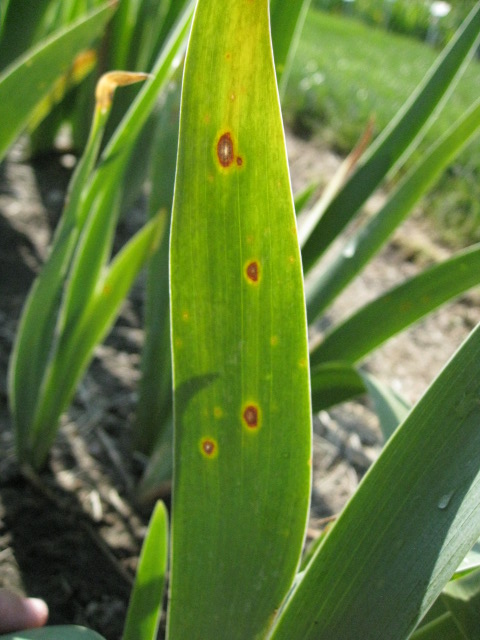By Jason Griffin, Professor, Extension Specialist
 Extension personnel across the state have been answering questions about dying/dead trees and shrubs since early spring. Symptoms have ranged from dead, to partially dead, to unusual growth, and late leaf emergence. While it is always good to scout for damaging insects (bagworms anyone?), disease pathogens, and physical injuries such as repeated mower damage to the trunk or recent construction projects that compromised root systems, this year we can blame a lot on our old friend mother nature. Since late summer 2022 through May 2023 rainfall has been scarce, a hard freeze came early, and summer heat exposed any weak landscape plants.
Extension personnel across the state have been answering questions about dying/dead trees and shrubs since early spring. Symptoms have ranged from dead, to partially dead, to unusual growth, and late leaf emergence. While it is always good to scout for damaging insects (bagworms anyone?), disease pathogens, and physical injuries such as repeated mower damage to the trunk or recent construction projects that compromised root systems, this year we can blame a lot on our old friend mother nature. Since late summer 2022 through May 2023 rainfall has been scarce, a hard freeze came early, and summer heat exposed any weak landscape plants.
 The National Weather Service office in Wichita (@NWSWichita) describes the
The National Weather Service office in Wichita (@NWSWichita) describes the
period from July 1, 2022 to April 23, 2023 as the 5th driest in history and the driest since 1989. Under those conditions, trees fail to accumulate adequate carbohydrates for the approaching winter, making them more susceptible to winter injury.
As drought continues through winter and spring, trees lack adequate moisture required for new spring growth. The result is trees failing to leaf out in the spring or pushing new spring growth that looks abnormal. If the plants were compromised by pests or physical injuries, environmental stress effects are magnified.
Trees do have mechanisms to deal with elevated temperatures. Unfortunately for the plants, heat rarely occurs as a single isolated event, and it is impossible to talk about heat without mentioning its partners in crime. As seasonal temperatures rise, precipitation becomes less frequent (or absent). Additionally, the Kansas wind machine gets fired up and cloud cover becomes less abundant. This quadruple whammy reduces a plant’s ability to tolerate elevated temperatures. Trees and shrubs use transpiration to cool themselves. When soil moisture is lacking, transpiration is reduced, thereby exacerbating the issue. If the situation does not improve, long-term damage can occur. What we see now are the effects of months of drought, a cold winter, and summer heat.

Of course, most plants made it into 2023 with little noticeable difficulties, attesting to their resiliency. What can be done to reduce the stressors that lead to tree decline?
- Choose the right plant. K-State research and extension has numerous resources available to help you in that challenging endeavor. Here is a good one: https://bookstore.ksre.ksu.edu/pubs/MF3246.pdf
- Plant it properly and in the right location. A tree planted with poor practices or in a location where it will encounter soil compaction, flooding, or excessive reflective heat will struggle during periods of environmental stress. You would be surprised how often it is done wrong. Here are some good guidelines: https://www.ksre.k-state.edu/news/stories/2022/03/horticulture-tips-for-planting-trees.html
- Water them wisely during periods of drought. Too much irrigation creates flooded soil, so water wisely. Here are some pointers: https://bookstore.ksre.ksu.edu/pubs/mf2801.pdf
https://bookstore.ksre.ksu.edu/pubs/mf2800.pdf - There is not much we can do about temperatures, but a healthy tree can typically handle that.










